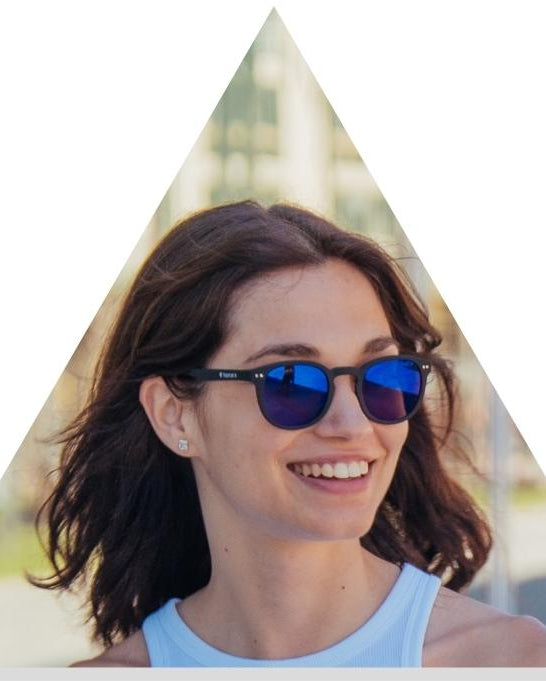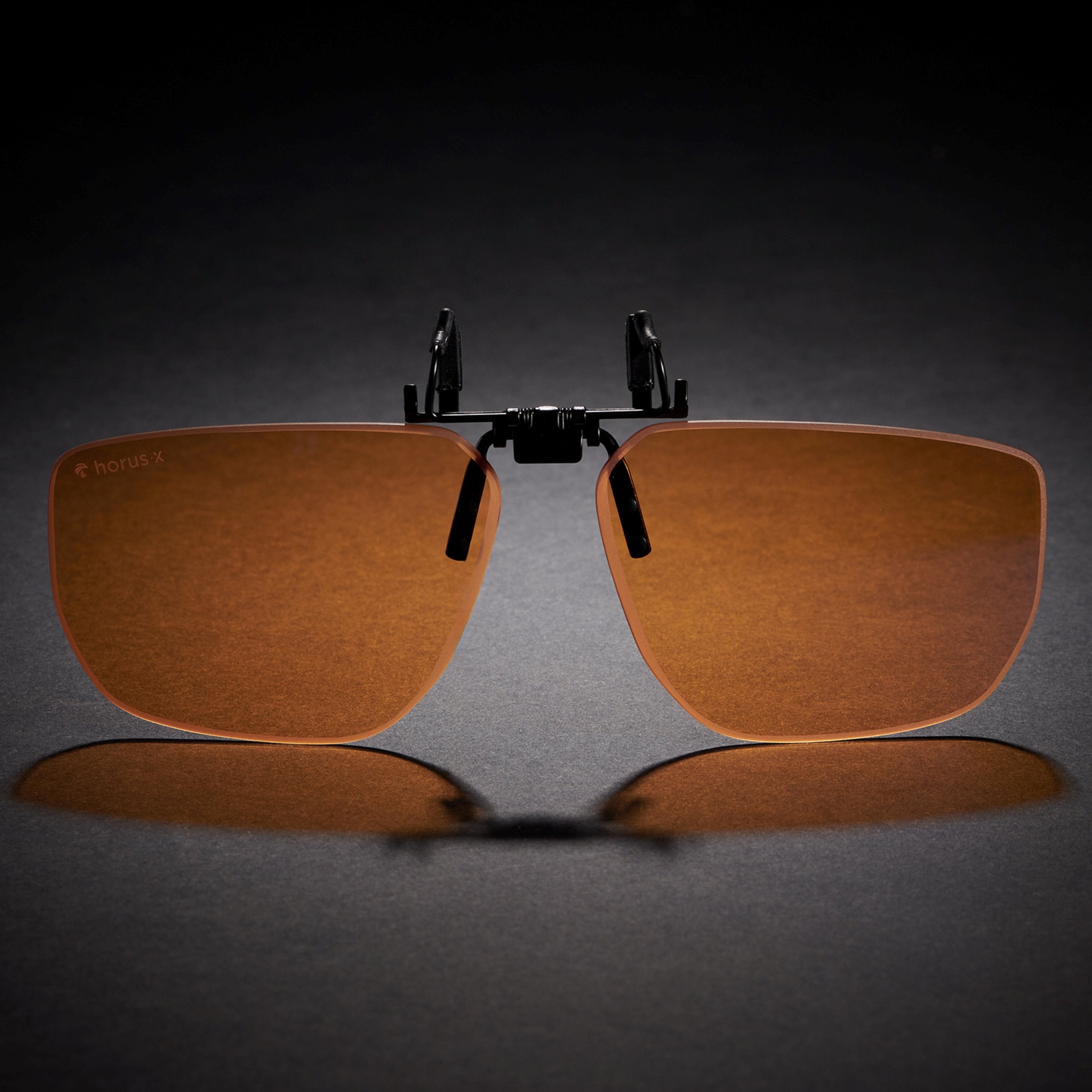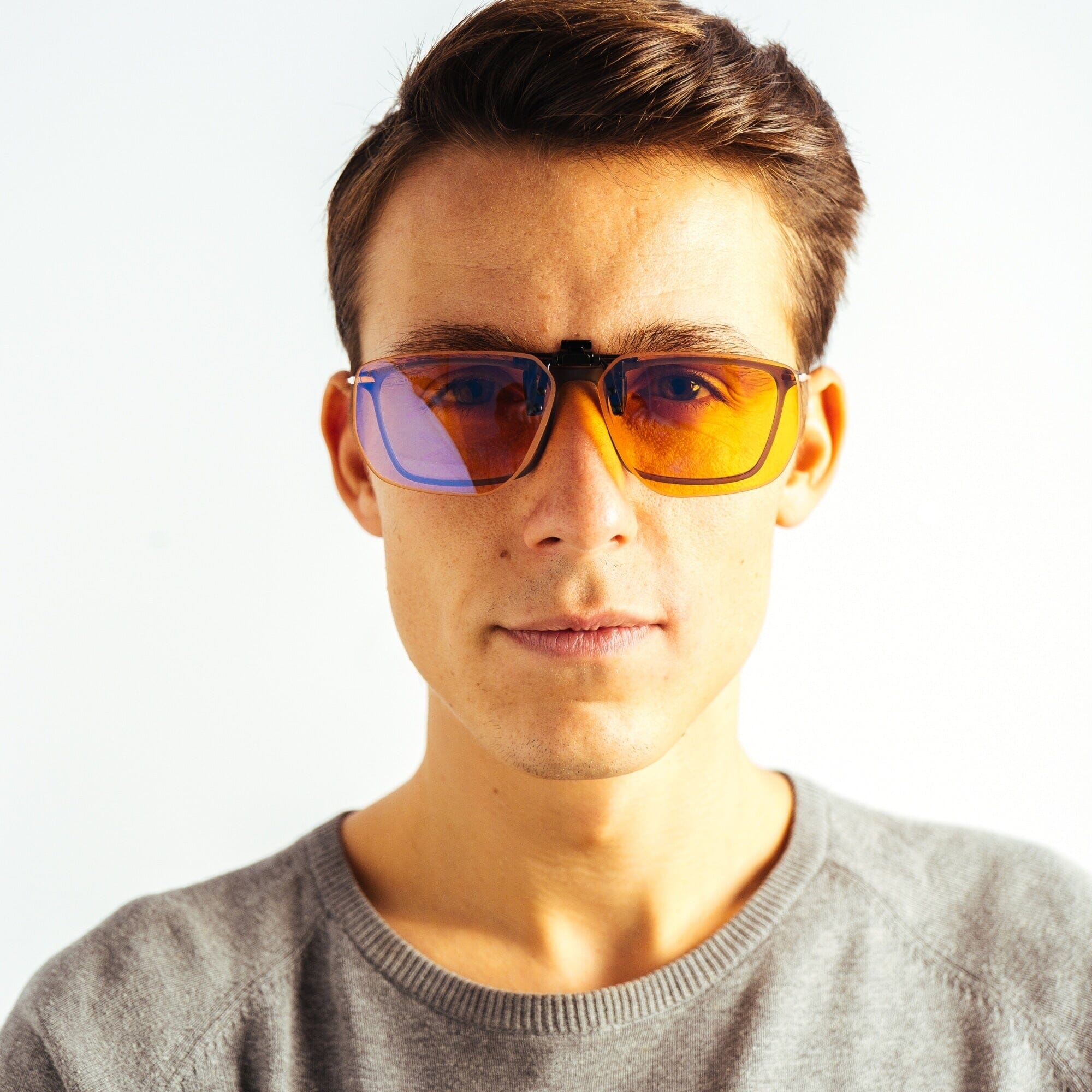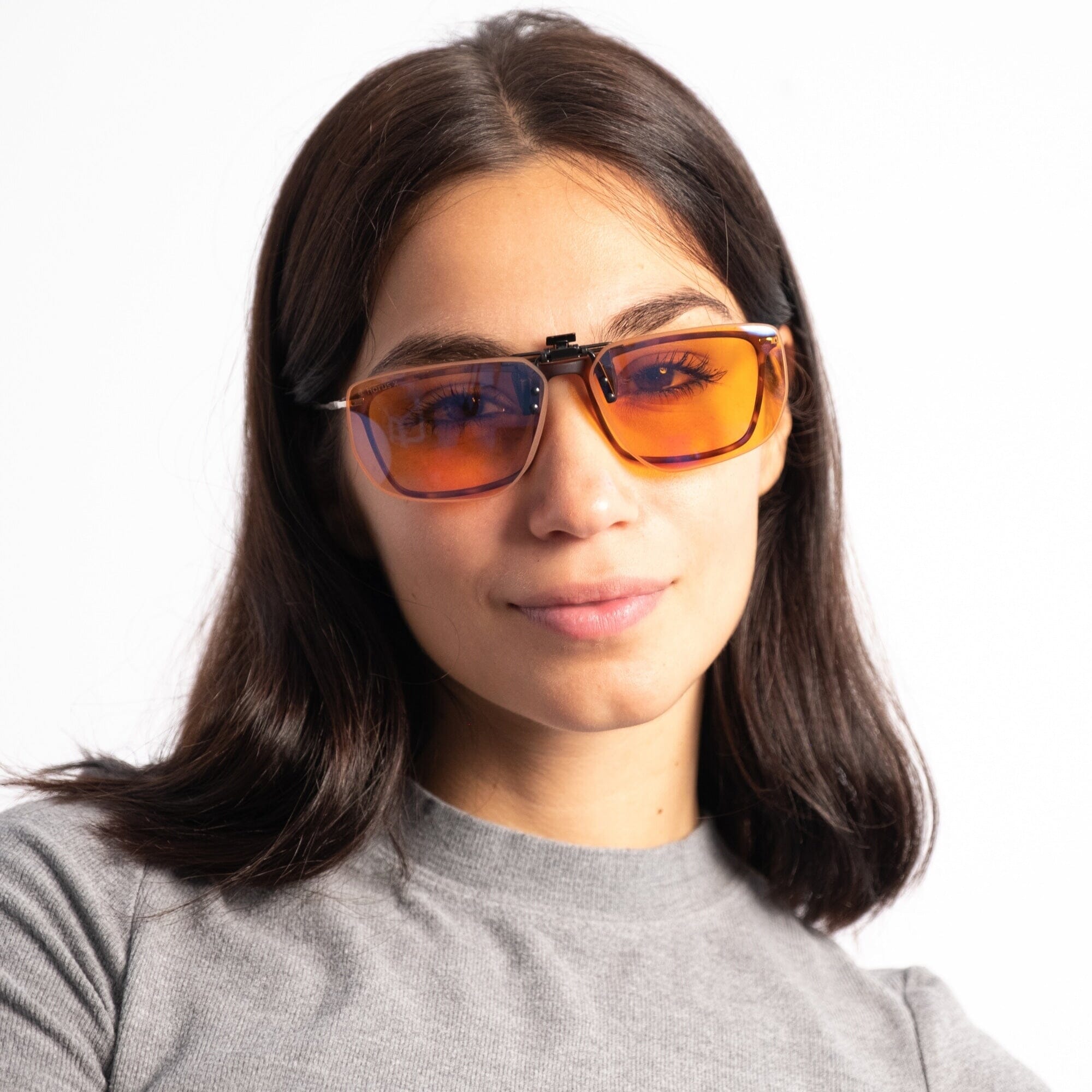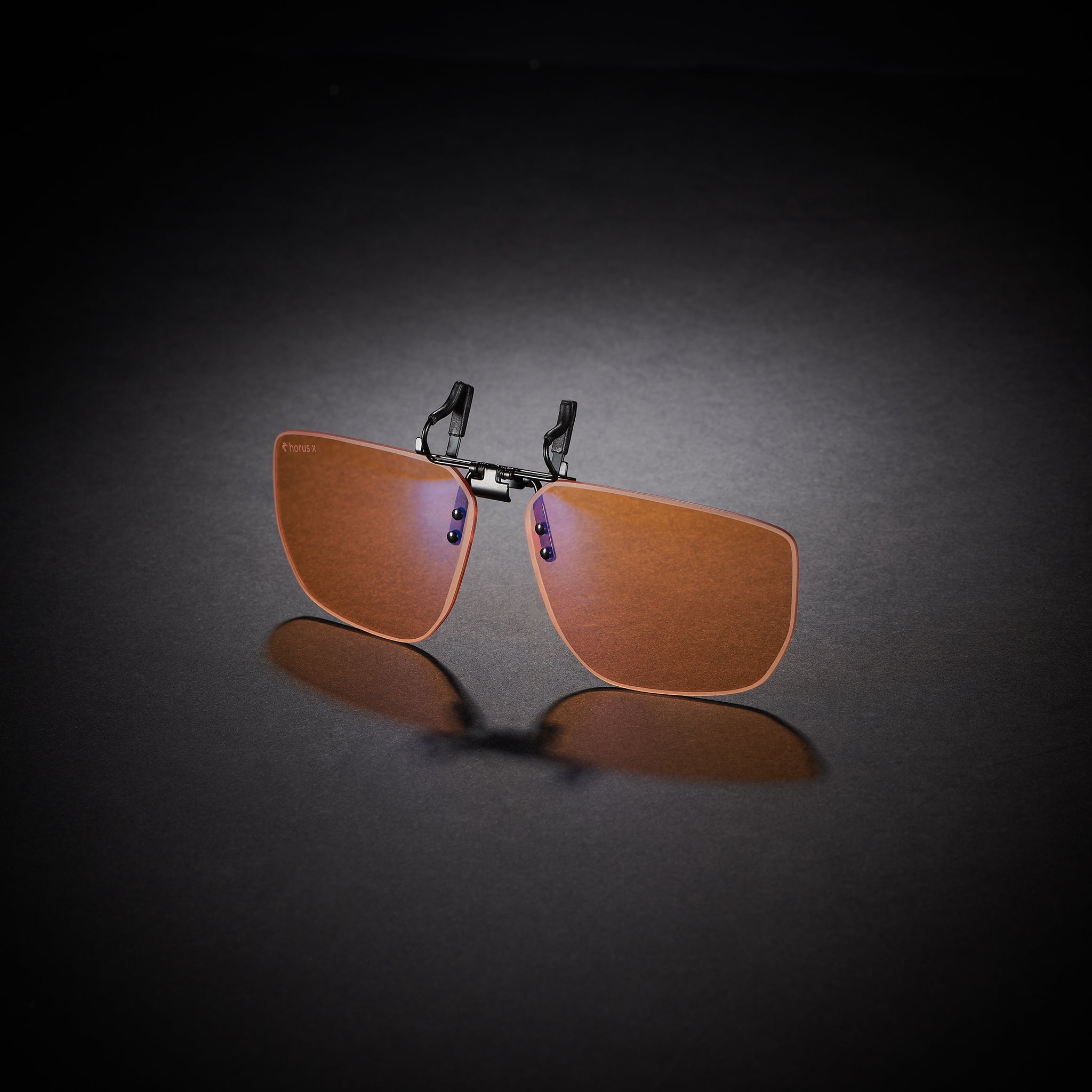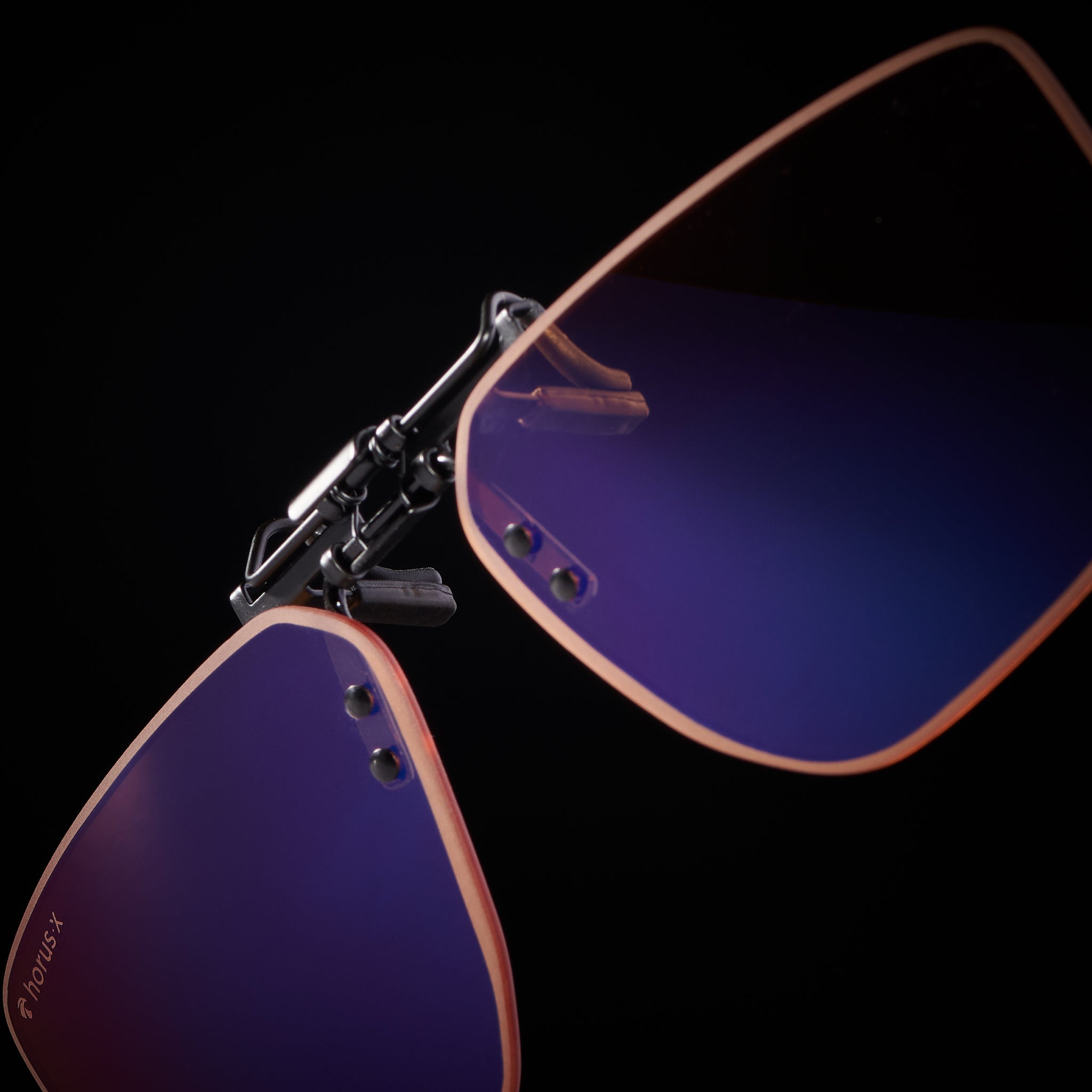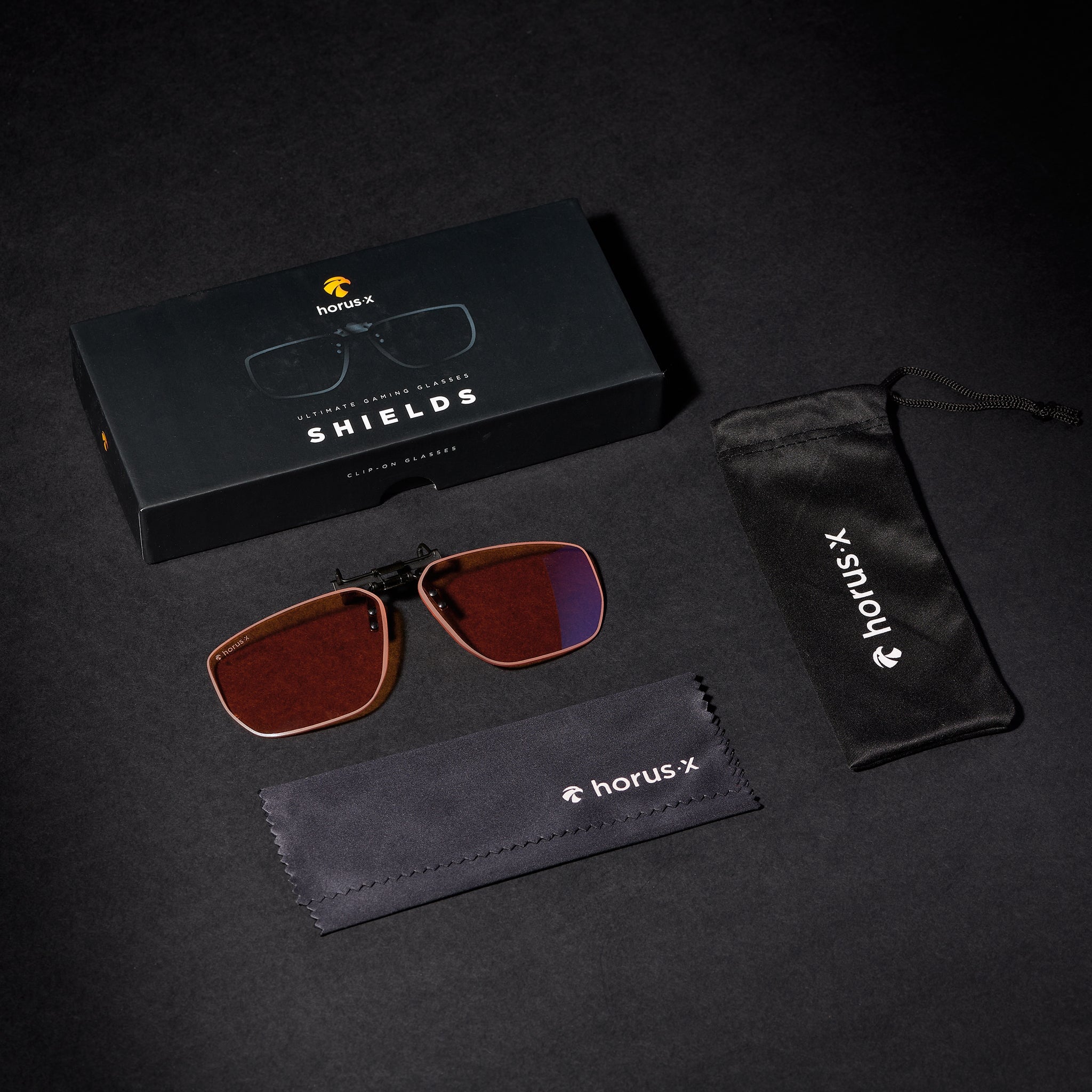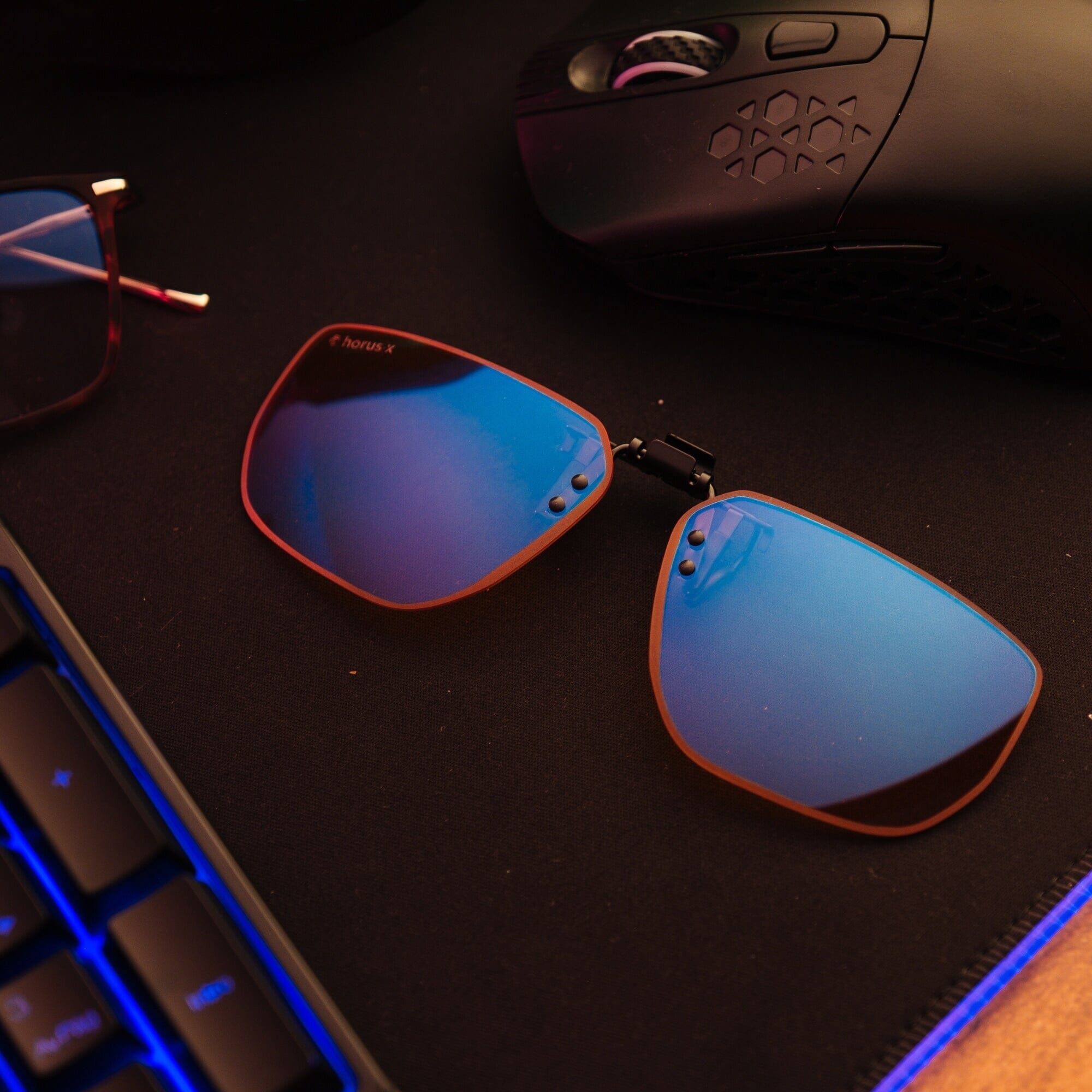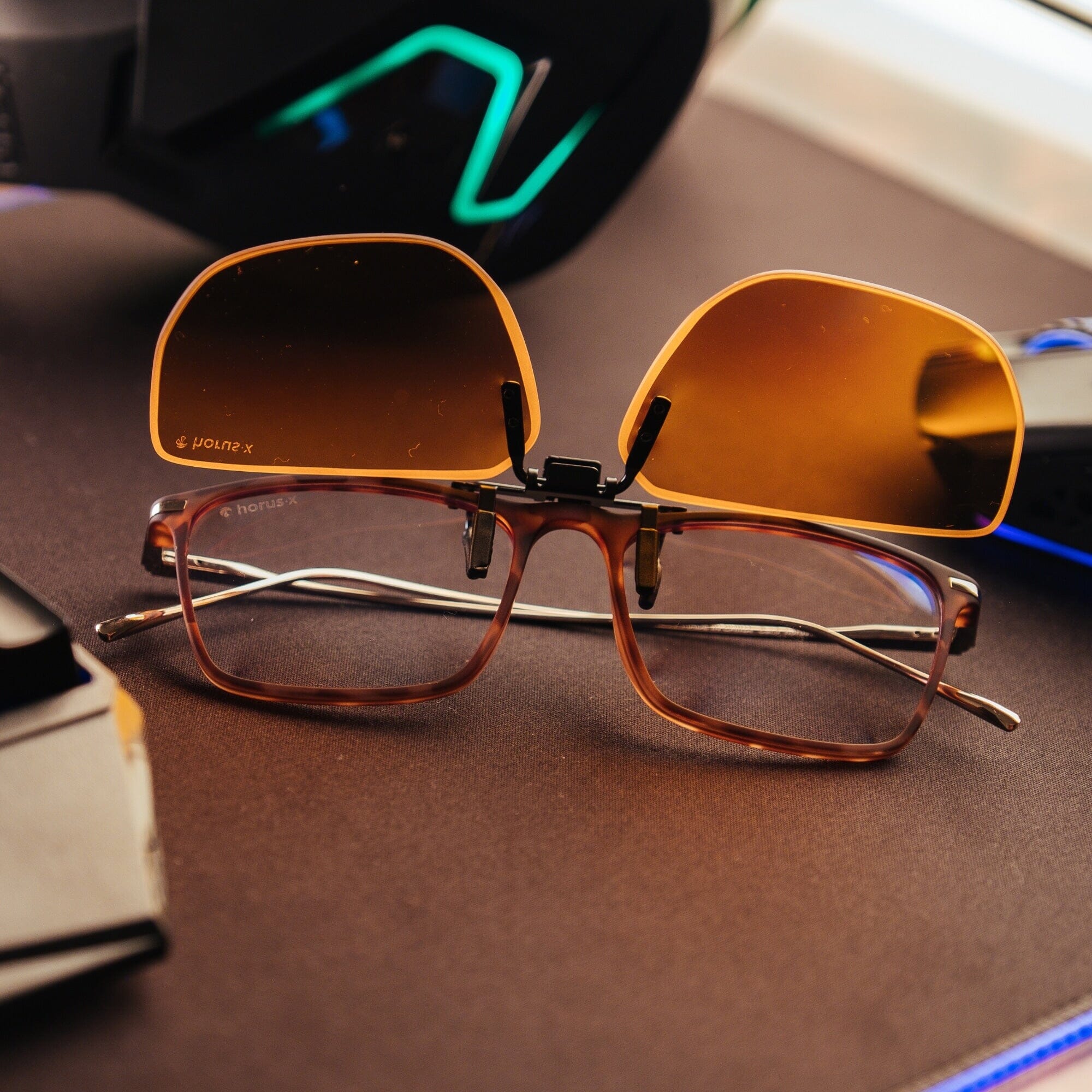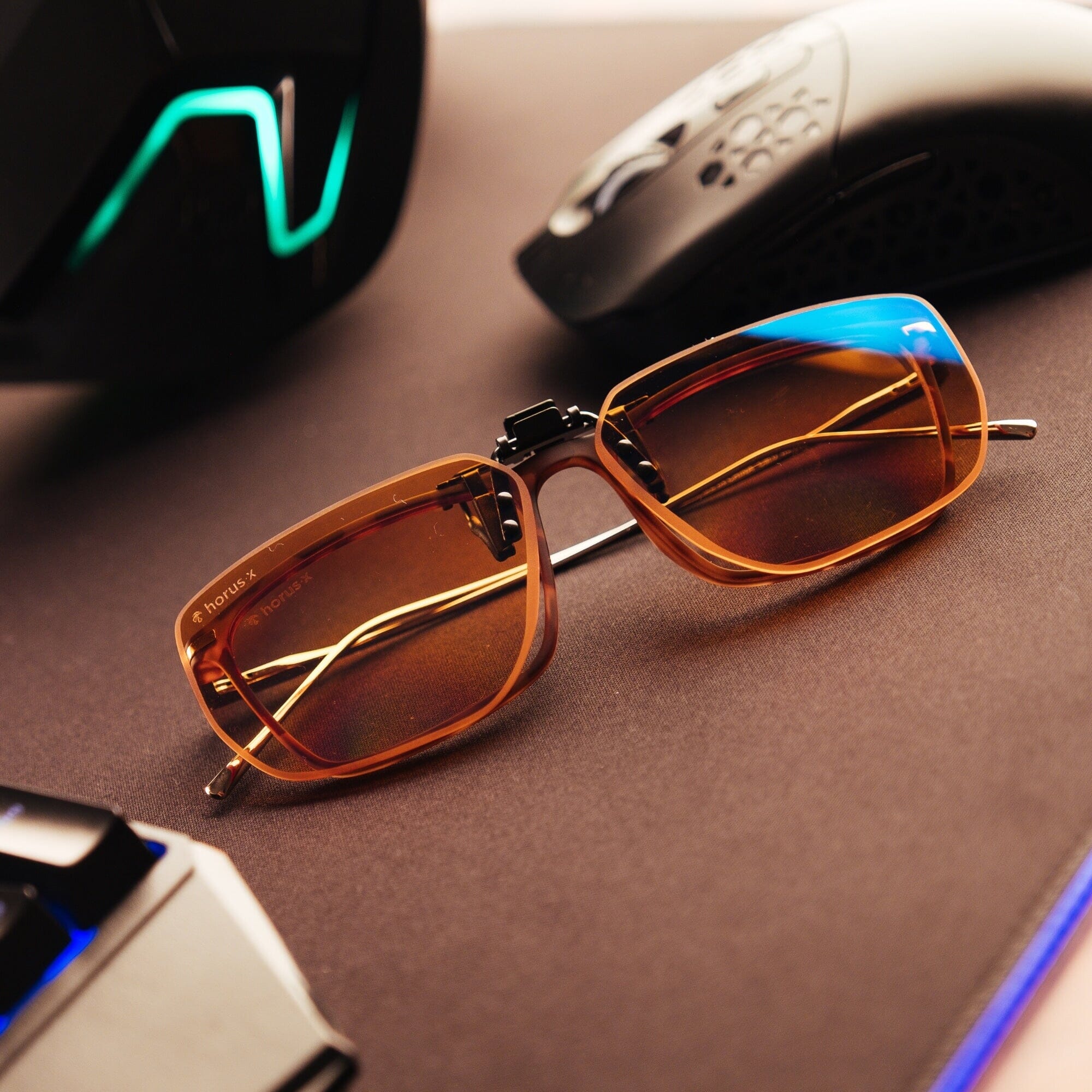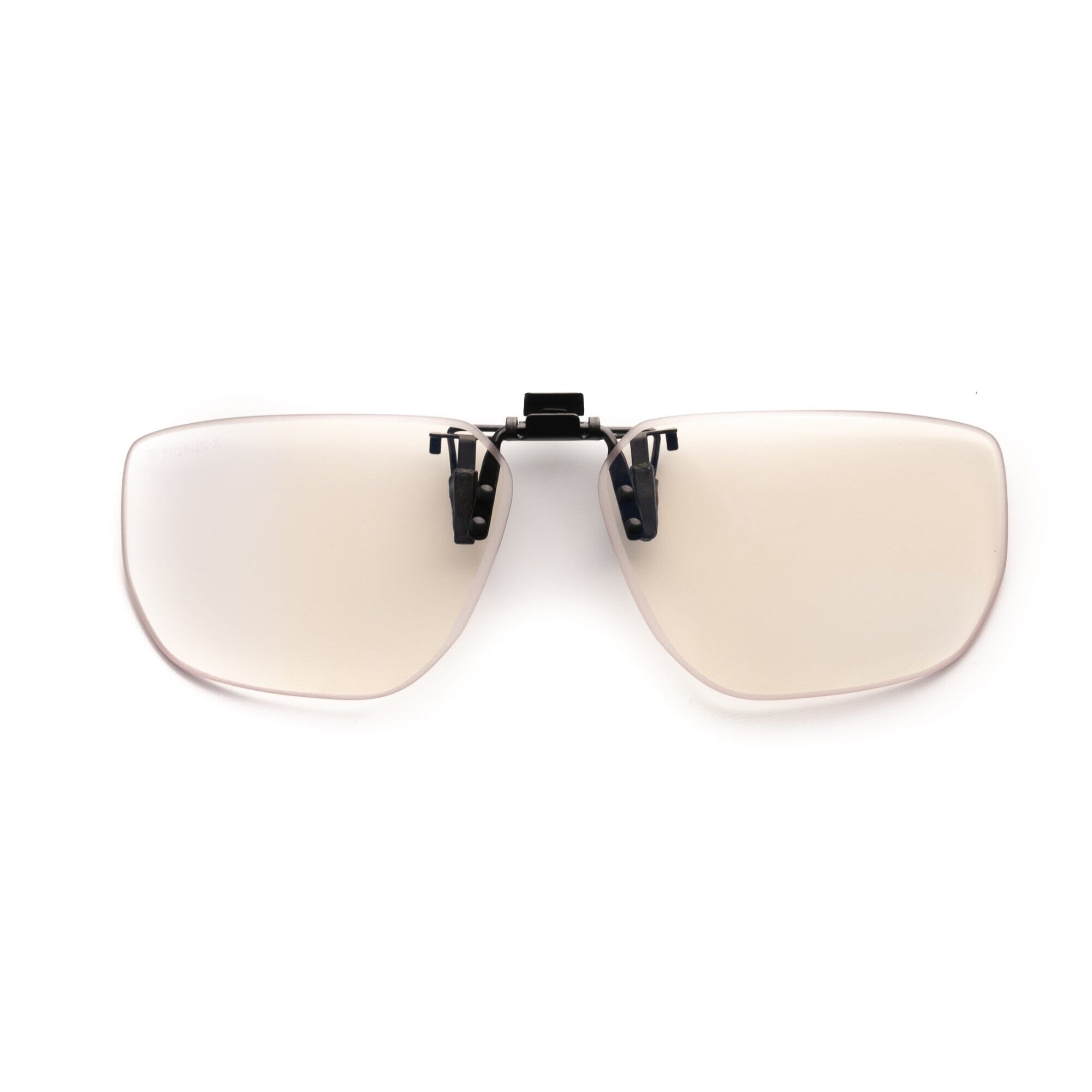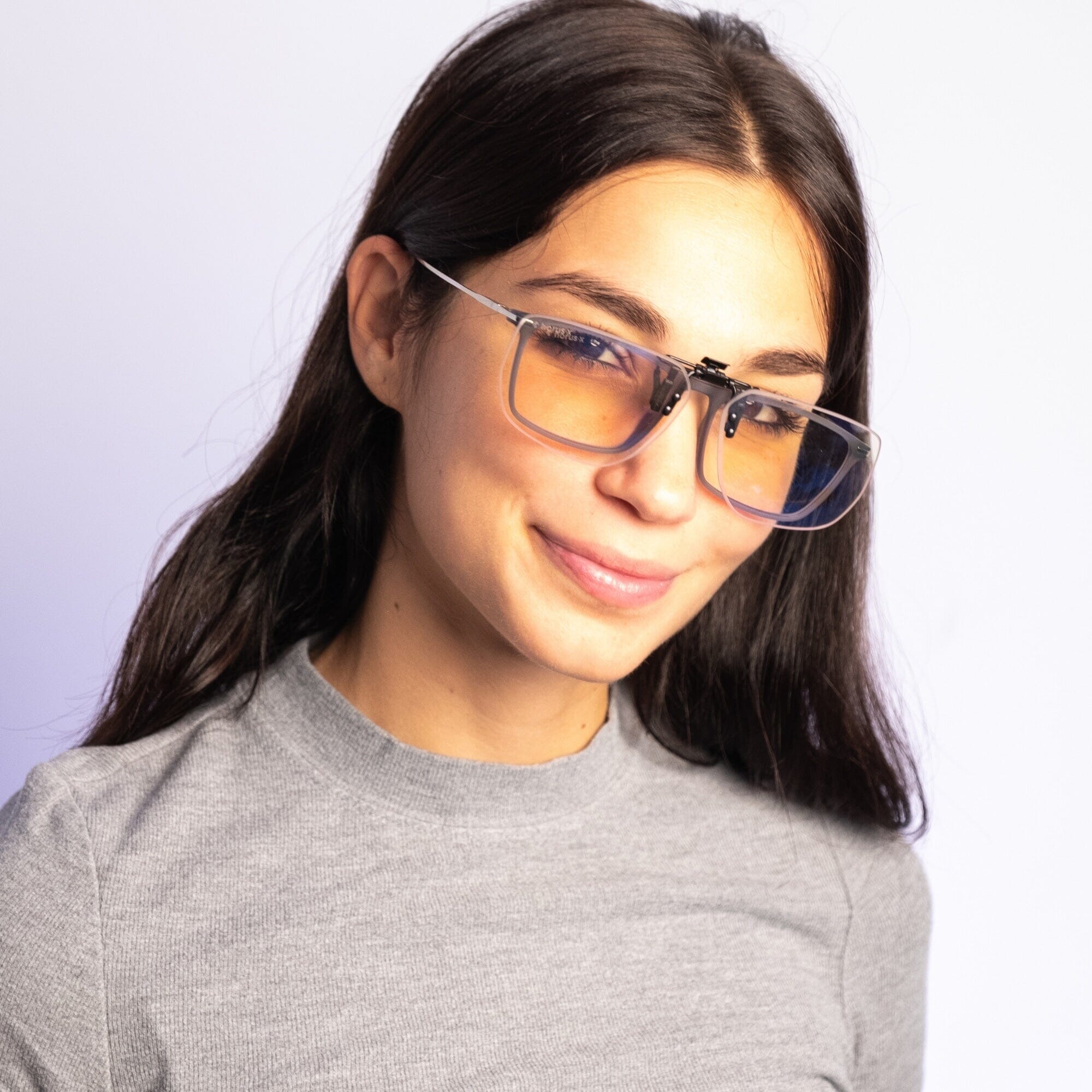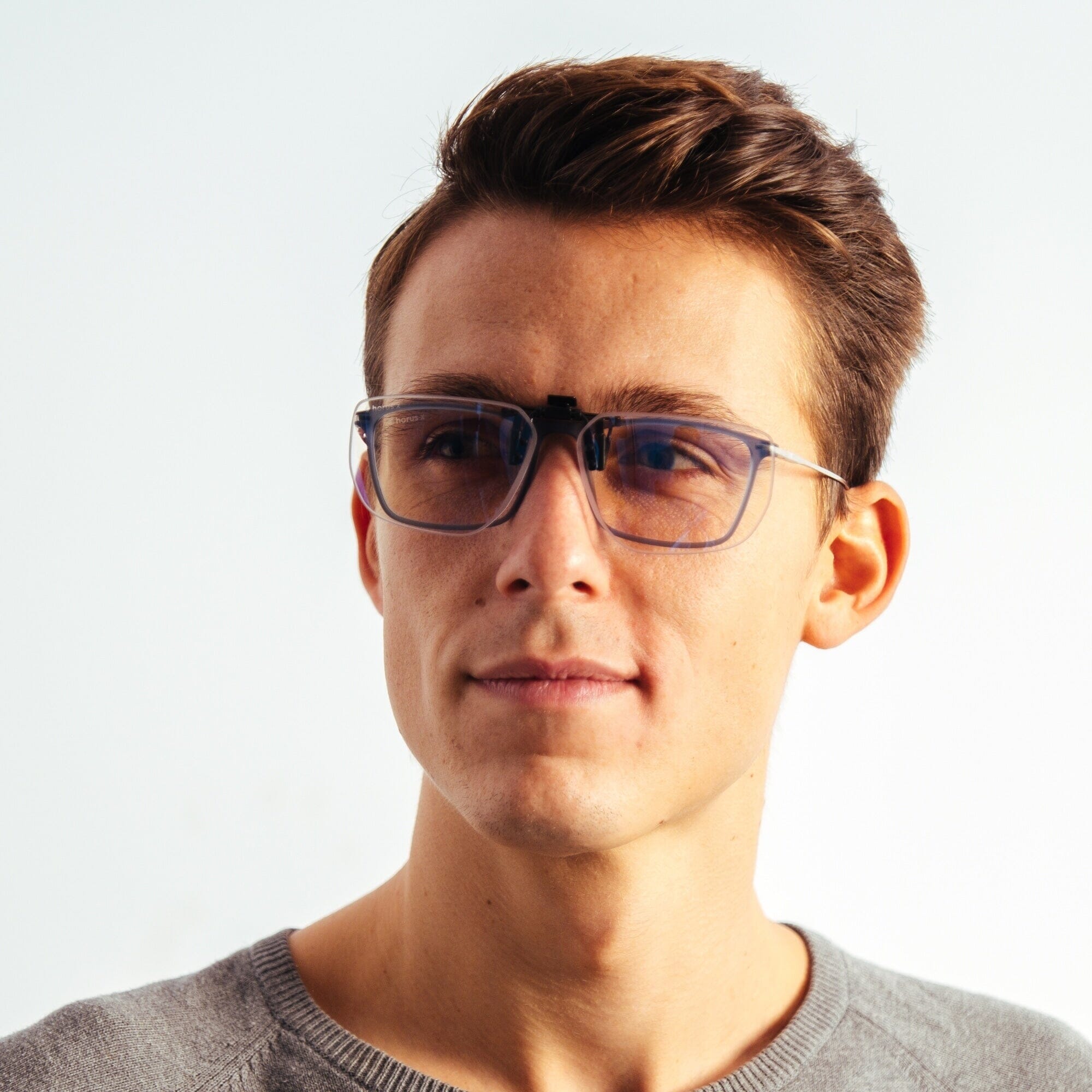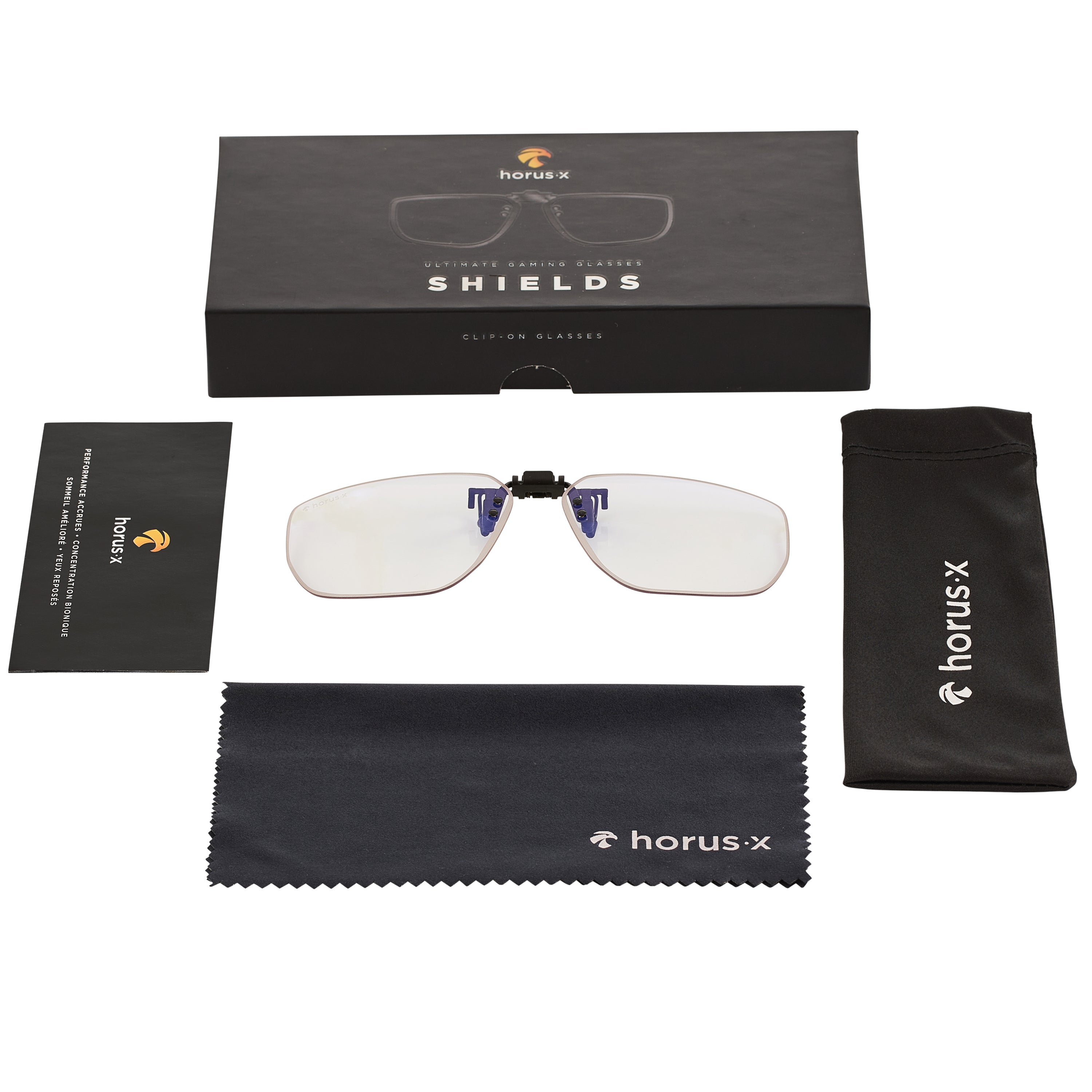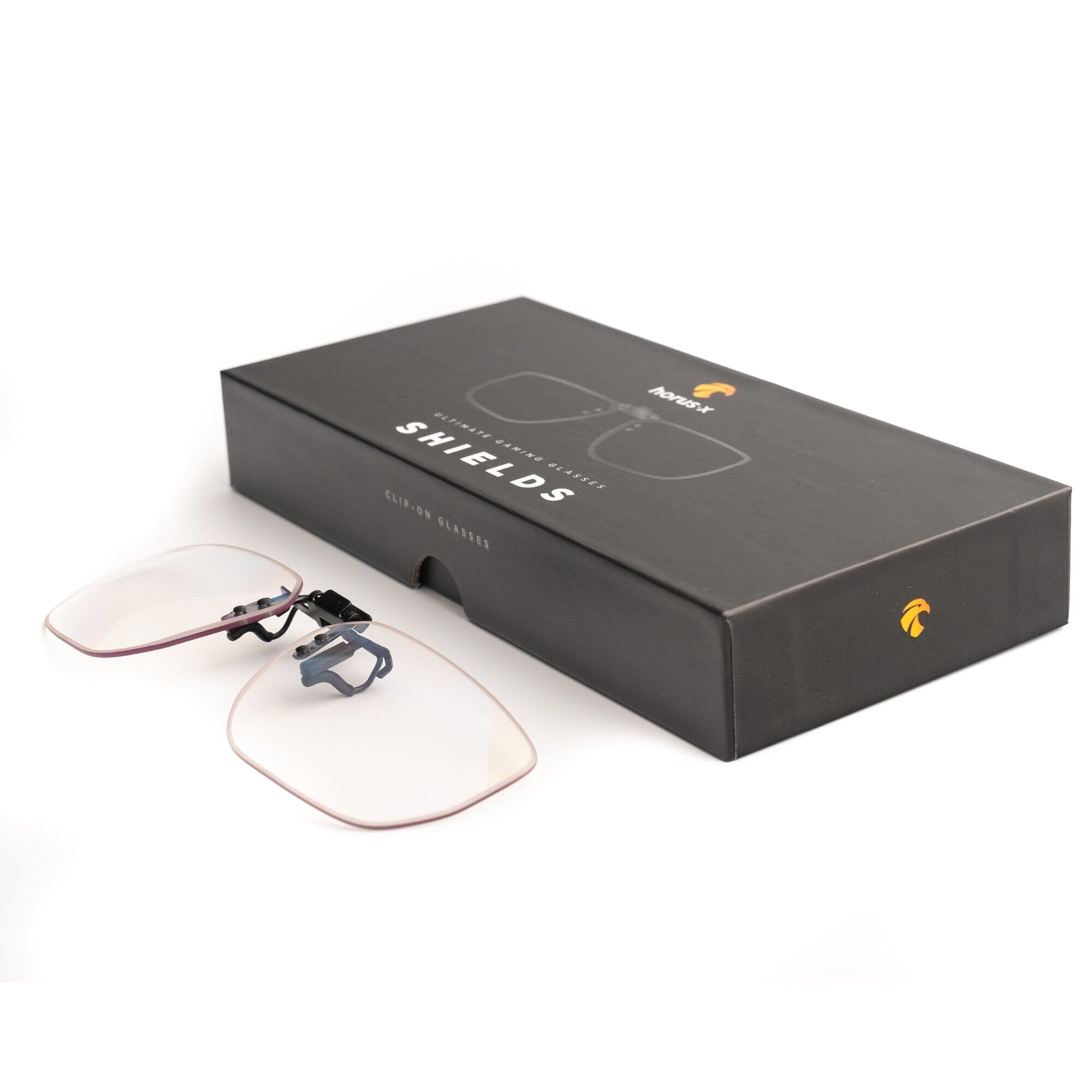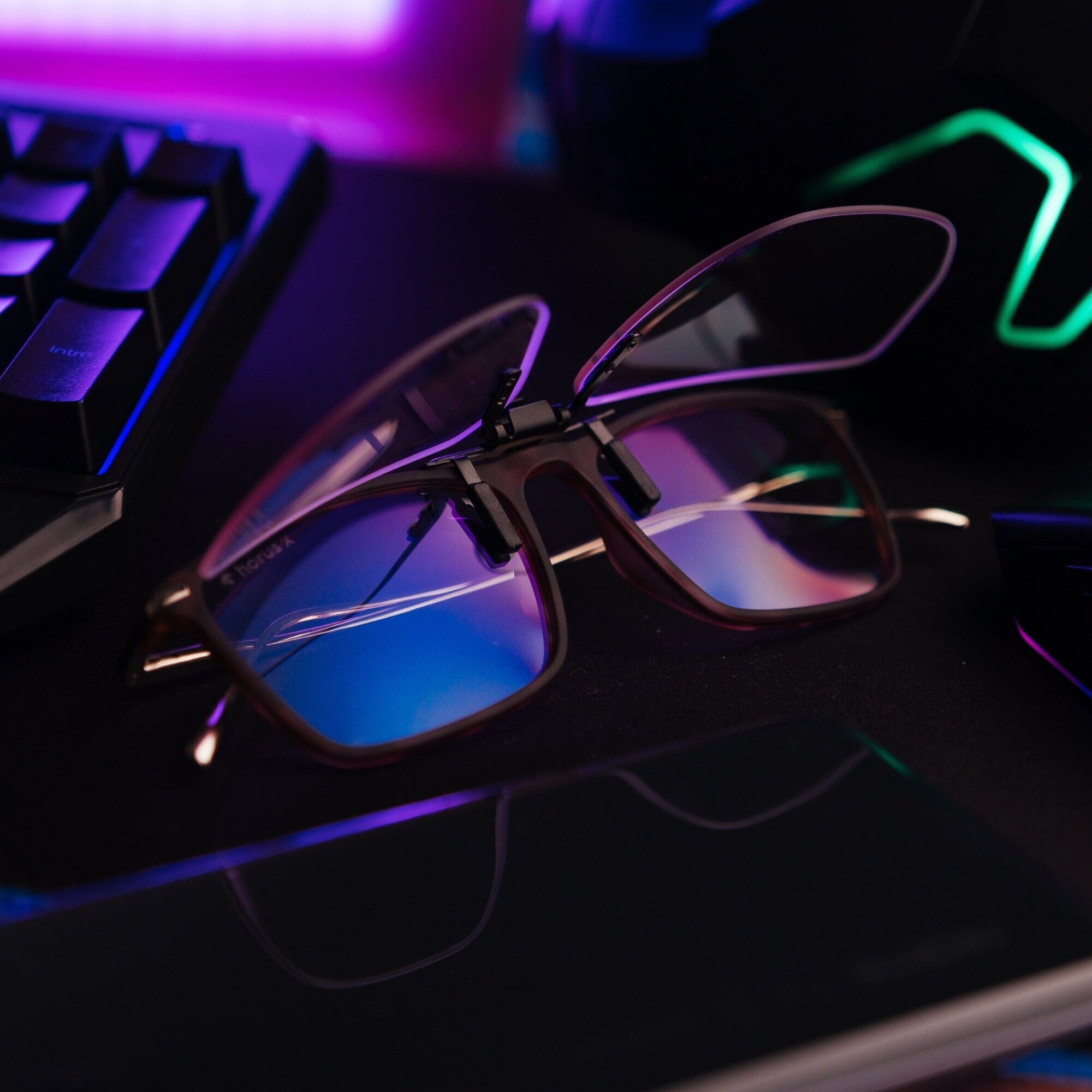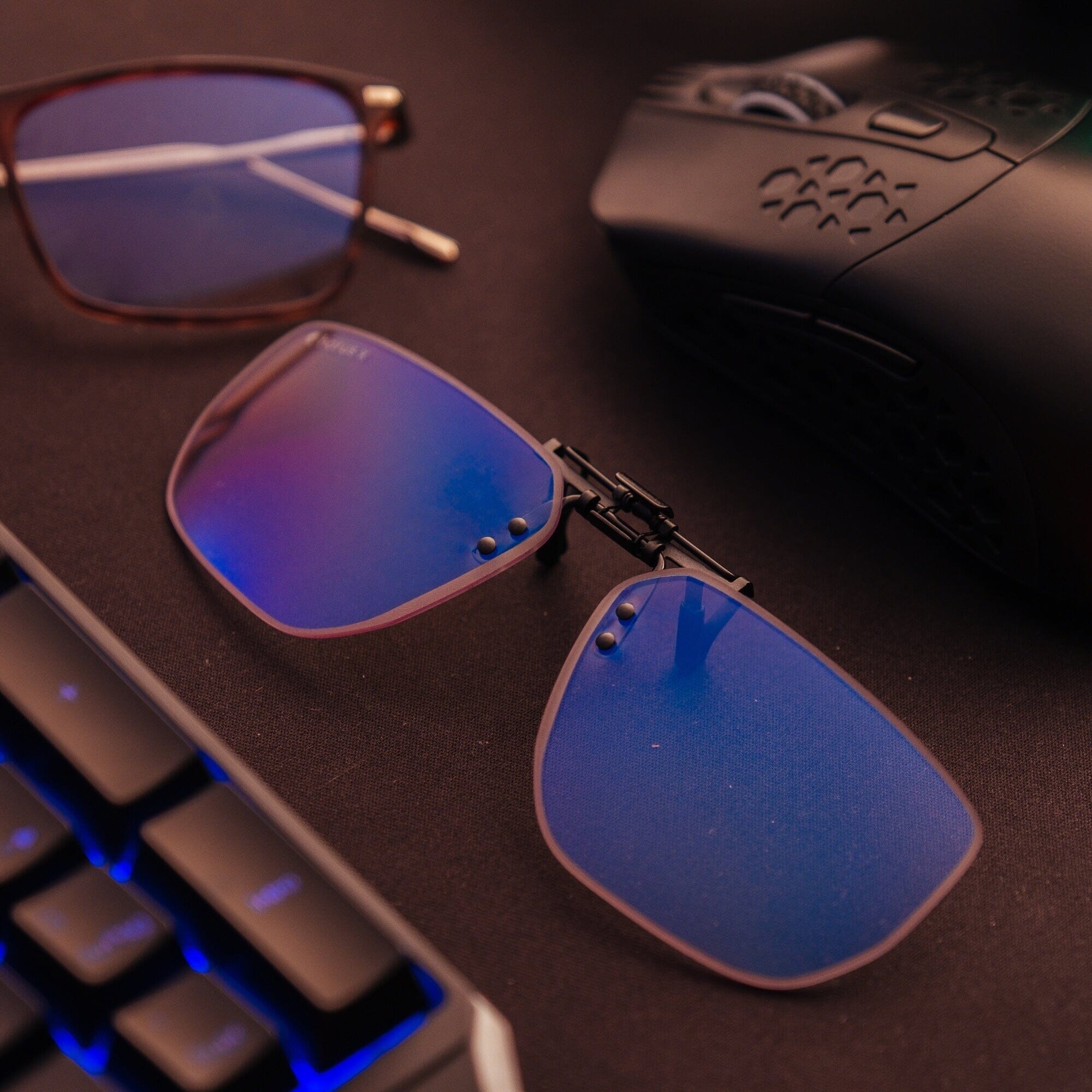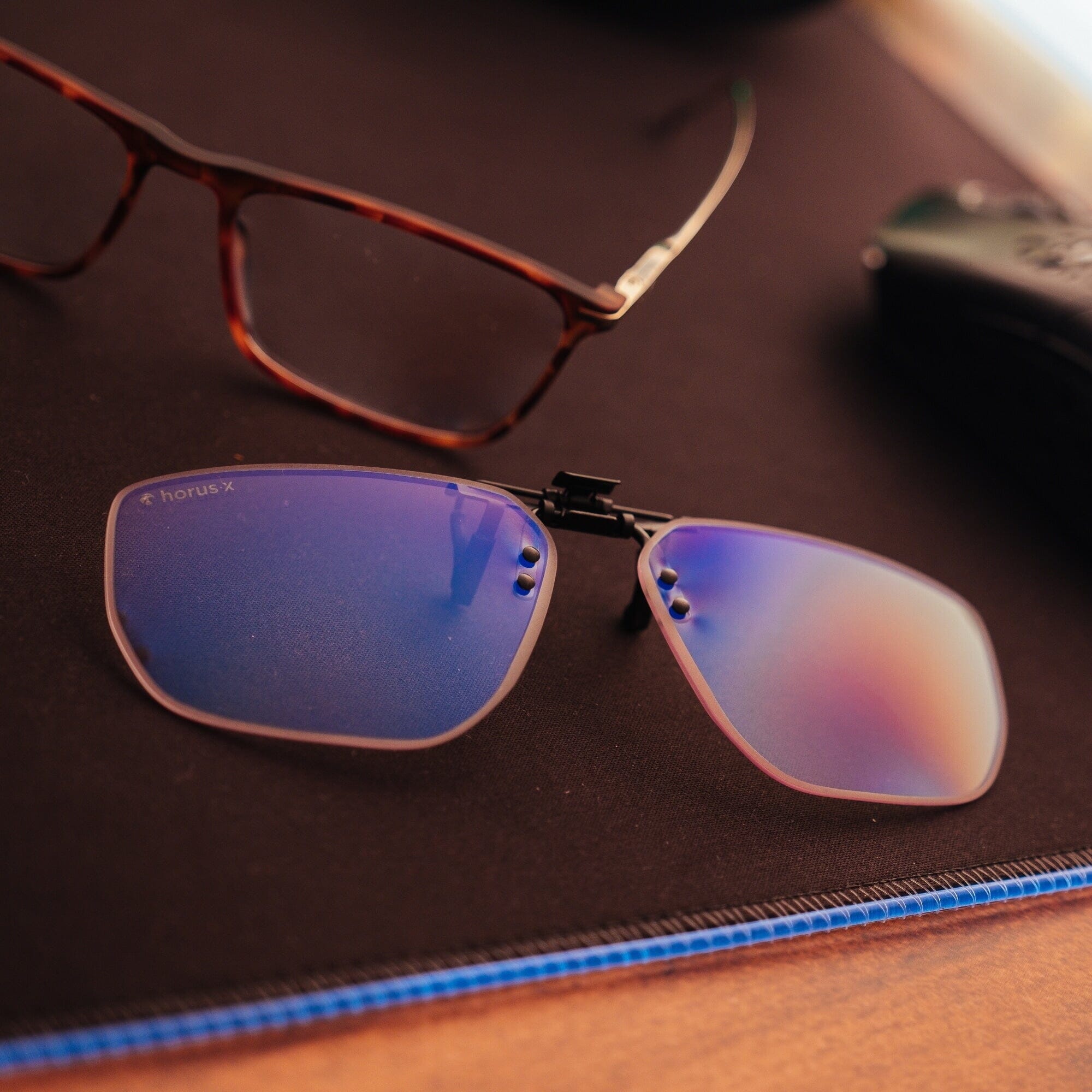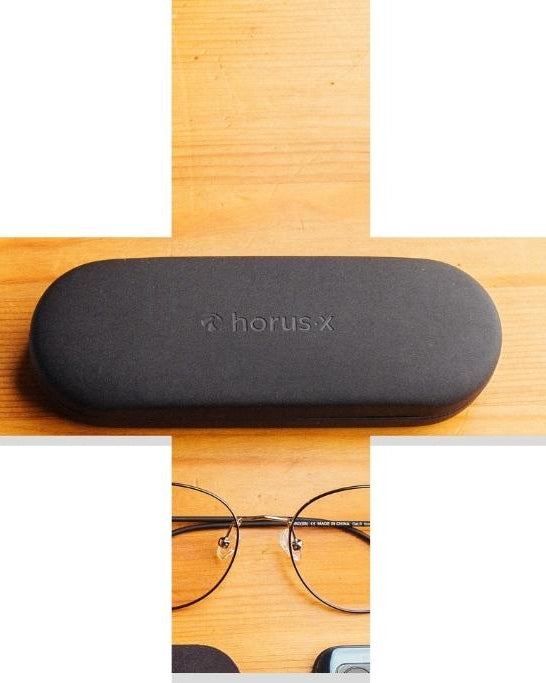What do eye experts say about blue light? Is it a myth or reality? And do blue light blocking glasses actually work?
We’ve been studying this question for a long time. Here’s what top ophthalmologists have to say about this fascinating part of the light spectrum, which still holds many secrets.
In this article :
- Blue light in a few lines
- Opinion of the experts: the Ophthalmos give their verdict
- Do they recommend blue light blocking glasses
Why is blue light so fascinating?
Because it’s everywhere!
Blue light has been on our radar for years now, and for good reason—it’s emitted by nearly all our screens (TVs, computers, iPads, smartphones, Kindles…) as well as by the LEDs that light up our homes.
We’re exposed to dangerous artificial blue light daily, but let’s not forget the biggest natural source: the sun.
Our screens and modern lighting technologies emit the rest (via these famous light-emitting diodes).
Blue light is not just any light
If we look at the physics behind blue light, things get interesting.
Blue light sits in the electromagnetic spectrum just above UV rays and just below green light. It has a wavelength between 380 and 500 nanometers, meaning short, high-energy waves—more powerful than other visible colors like green, yellow, and red.

This high-energy nature raises an important question:
Could blue light’s specific characteristics have harmful effects on our health?
Many studies suggest a possible link, but the findings are all over the place, leading to a mix of truth and nonsense floating around. Let’s see what the experts—actual ophthalmologists—have to say.
The sleep connection: A clear consensus
All ophthalmologists agree: blue light affects our circadian rhythm. Basically everyone agrees that blue light has a strong impact on our waking and sleeping patterns.
Blue light blocks the secretion of melatonin, the hormone that helps you fall asleep and stay asleep at night.

So if you’re scrolling your phone before bed (or in the middle of the night, stressing over how long until your next vacation), you’re wrecking your melatonin levels and making it much harder to fall asleep.
All types of light have this effect, but blue light is the worst offender—it’s twice as powerful as green light, according to a Harvard study.
Effects still under study
There are tons of studies on blue light. While none can definitively prove immediate damage to the human eye, many highlight potential long-term risks that some ophthalmologists take very seriously.
The early conclusions? Not great. The risks may be serious enough to justify preventative measures, which, thankfully, aren’t complicated or expensive.
Potential risks of blue light exposure
- Retinal damage and AMD (age related macular degeneration)
- Headaches, migraines
- General eye strain and fatigue

1) Retinal damage and age-related macular degeneration ( AMD)
Children may be even more vulnerable, as their eye protection mechanisms are weaker than those of adults. Here’s what the experts say:
Gilles Renard , Scientific Director of the French Society of Ophthalmology (health magazine interview of 02/11/2019):
We do not know what the effects of dark blue light are in real conditions, but we can think that it is certainly toxic, especially in children whose cornea and lens, which are clearer, allow almost all the blue to pass through.
Serge Picaud, neurobiologist and Inserm director at the vision institute:
It has been demonstrated in an in vitro model of age-related macular degeneration (AMD) that the most toxic wavelength for retinal cells is located around 415-455 nanometers. Several epidemiological studies have shown that this blue light was indeed a risk factor for AMD.
October 2016 study by researchers from the Cordeliers Research Center:
In this study, researchers looked at the effects of LEDs on our retina. Several experiments were conducted on albino rats, which, exposed to LED light, have suffered degeneration of their retina in addition to the appearance of necrosis.
Admittedly, this is only a scientific model in the laboratory with much more intense blue light than what we face in front of screens, but it very likely highlights long-term harmfulness.
American Macular Degeneration Foundation
The blue rays in the spectrum appear to accelerate Age-Related Macular Degeneration (AMD) more than any other ray in the spectrum.
Beaver Dam Eye Study Report
Blue light exposure in teenagers and people in their 20s and 30s can advance the risk of developing AMD by 10 years and double the risk of suffering from blindness in life.
Professor Ajith Karunarathne from the University of Toledo (USA), article in Nature (05/06/18) and interview by the university (08/08/2018)
We are exposed to blue light continuously and the eye cannot block or reflect it. It's no secret that blue light harms our vision by damaging the retina. Our experiments explain how this happens and we hope it will lead to therapies that slow down AMD, like a new type of eye drops. You need a continuous supply of retinal molecule if you want to see. Photoreceptor cells are useless without the retinal that is produced in the eye. If you expose the retina to blue light, the retinal kills the photoreceptor cells as this molecule dissolves on the membrane. Photoreceptor cells do not regenerate in the eye. When they died, they died for good.
Basically, Karunarathne's lab discovered that exposure to blue light causes reactions in the retina that generate toxic chemical molecules for photoreceptor cells.
Vincent Gualino, ophthalmologist at the Lariboisière hospital in Paris and Montauban
It is, above all, the cumulative effect that could be harmful.

2) Headaches and migraines related to blue light
People who suffer from migraines often report an increased sensitivity to light (in addition to the intense headache). The combination of these intense migraine symptoms can be really painful and affect your daily life.
While food triggers get a lot of attention, screens may also play a role.
Everyone has a certain level of light sensitivity, but for people with photophobia, sudden brightness, fluorescent lights, and even sunlight can worsen migraines.

And guess what? Blue light is the most painful wavelength for migraine sufferers.
In fact, blue light from electronic devices can even trigger migraine attacks. Many migraine specialists recommend limiting screen time for those who regularly suffer from severe headaches and sensitivity to light.
Dr. Pietrini (Ophthalmologist, Laureate of the Broussais Hôtel Dieu Faculty of Medicine) points out that blue light has a high intensity and flickers more:
This causes glare for the eye and makes visual contrast complex and affects acuity. On the other hand, it is its duration of exposure and its intensity which present an increasingly significant danger. We are subjected to intensive radiation from our screens, which emit powerful blue light radiation. This prolonged exposure causes eye fatigue (eye stinging, headaches) and more seriously can damage ocular structures such as the lens and the retina.
Blue light is not the only cause of this computer vision syndrome (UVs, bad reflections, bad lighting, etc.), but it contributes greatly to it.
How to protect yourself: advice from ophthalmologists
The good news is that it is relatively easy to protect yourself from blue light. One of the simplest solutions to protect yourself, blue light blocking glasses. But be careful with your choice, not all blue light blocking glasses are created equal.
As our ophthalmologists point out, you shouldn’t block all blue light—only the harmful wavelengths closest to UV light. Ideally, your glasses should filter between 380 and 450 nm, with a particular focus on 380-430 nm, where blue light is most intense.
Here's a quick checklist of the ways eye doctors recommend you protect yourself:
- Use screen glasses or gaming glasses that filter harmful light, whether from screens or LEDs
- Check out our picks for the best gaming glasses
- Discover the best blue light blocking glasses for women and men
- Discover the blue light blocking glasses for children
- Use anti-blue light applications that soften the light emitted by your screens
- Avoid screens 2 to 3 hours before bedtime (not easy to do but helps a lot for falling asleep)
- Use warm dim lighting in the evenings
- Take more breaks to give your eyes time to recover
- Don't turn on a light when you wake up at night!
Bonus tips for overall eye health:
- Remember to blink your eyes to keep them hydrated
- Drink plenty of water to stay hydrated in general
- Adjust ambient lighting for better contrast
- Make sure your screen is of good quality
Blue light blocking glasses ophthalmologist review: Final Thoughts
Many top eye specialists warn about the dangers of blue light, while others prefer to turn a blind eye to this growing problem.
We still have a lot to learn about blue light, but with growing research pointing to serious risks, taking basic precautions just makes sense.
Want to stay updated on the latest blue light research? Join our newsletter or follow us on social media!



